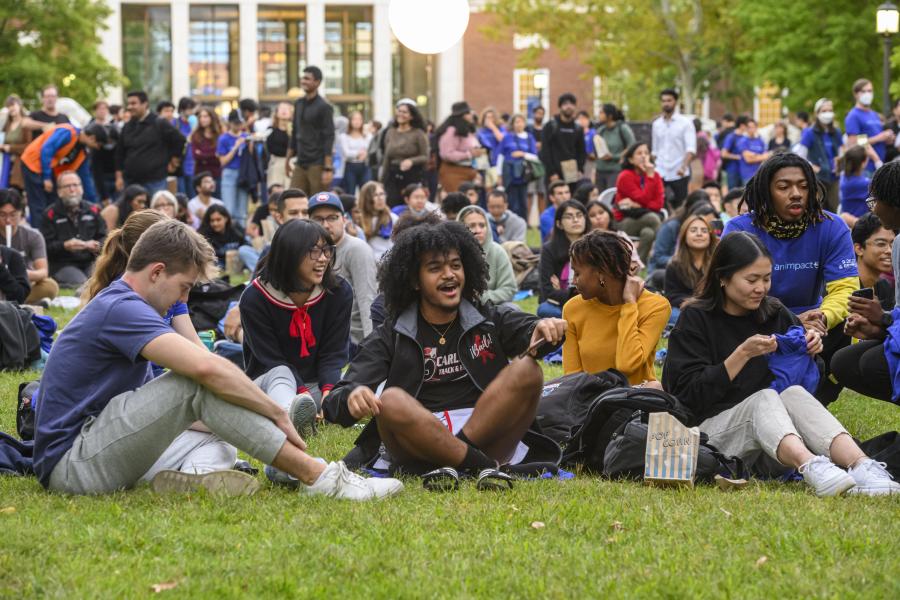
Credit: Will Kirk / Johns Hopkins University
Countdown to impact
The Johns Hopkins community watches the DART spacecraft make its final approach to Dimorphos asteroid in a livestream watch party on Keyser Quad
By Hub staff report
/ Published Sept 27, 2022Last night, the feed from a NASA spacecraft went suddenly dead.
No, nothing had gone terribly wrong in outer space. The loss of signal meant the spacecraft, NASA's Double Asteroid Redirection Test, or DART, had completed its mission to collide with the small asteroid moonlet, Dimorphos, knocking the chunk of space rock off its course. The craft's final approach was streamed live to the public via a specially built camera designed and developed by scientists at the Johns Hopkins Applied Physics Laboratory, which also led the mission on behalf of NASA.
Video credit: Aubrey Morse / Johns Hopkins University
Johns Hopkins students, faculty, and staff gathered on the university's Homewood campus to share in that long-awaited moment. Proposed in 2017, the DART mission aims to demonstrate a form of planetary defense called kinetic impact, which artificially changes the course of asteroids as they orbit the sun.
It's a vitally important form of planetary defense: In 2013, a meteor just 60 feet wide exploded over Chelyabinsk, Russia, creating a bomb-like shockwave that struck six cities, injuring 1,600 people and causing millions of dollars in damage. But astronomers estimate that there are tens of thousands of near-Earth asteroids that are even larger and could cause regional devastation if their orbits ever collided with Earth's. DART's target, Dimorphos (which does not pose a threat to Earth), is 525 feet wide, and scientists expect the collision will change its orbit by a few minutes—which may seem small in the grand scheme of things, but could be enough to avert disaster if an asteroid of its size ever approached Earth.
The video stream of the collision was made possible by the Didymos Reconnaissance and Asteroid Camera for Optical navigation. Known as DRACO, the APL-built camera not only provided a video feed of the impact, but also supported autonomous optical navigation guiding the craft's final moments.
The watch party on Keyser Quad featured food and snacks inspired by astronaut food, T-shirt giveaways, music, and remarks by emcee Kevin Lewis, an associate professor in the Department of Earth and Planetary Sciences who studies planetary geophysics.
Still a small white speck, DART's target Dimorphos finally comes into view
Credit: Will Kirk / Johns Hopkins University
Earth and planetary scientist Kevin Lewis serves as emcee during the watch party
Credit: Will Kirk / Johns Hopkins University
As DART begins its final approach, the details of the shape and composition of Dimorphos come into clearer focus
Credit: Will Kirk / Johns Hopkins University
Mission engineers at the control room at APL celebrate the loss of signal from DART, indicating a successful hit
Credit: Will Kirk / Johns Hopkins University








